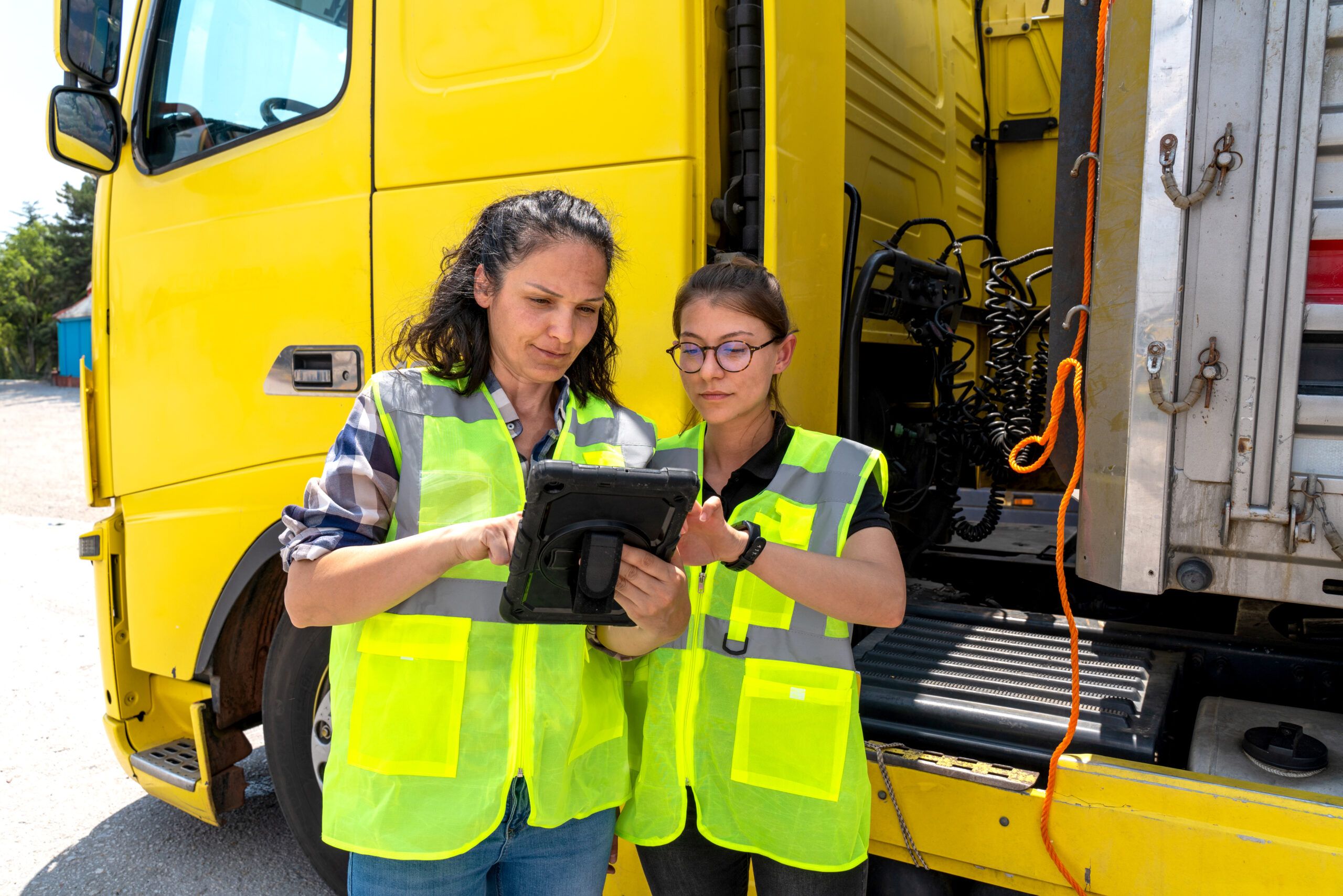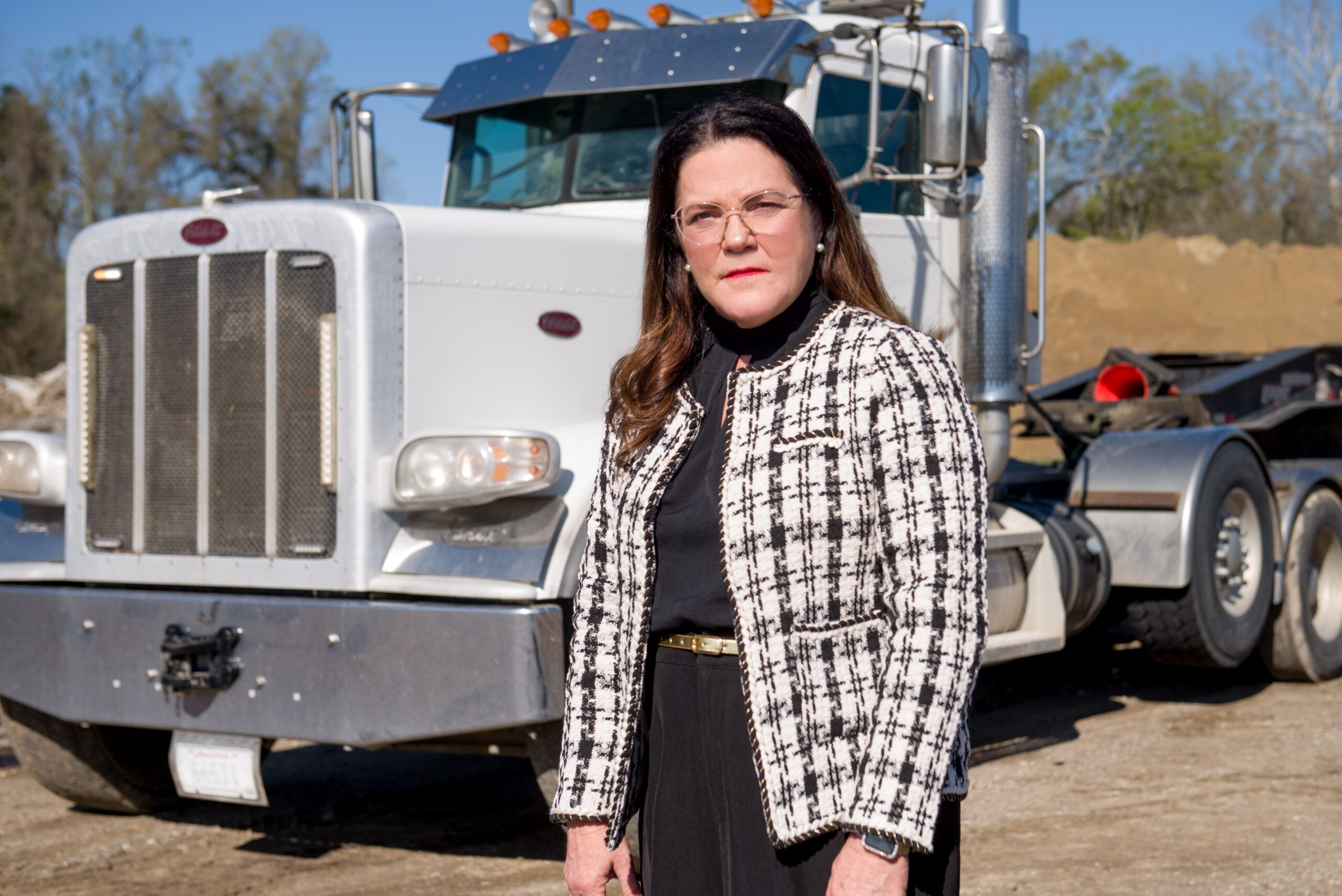
Louisiana’s beleaguered trucking industry blames systemic issues for a worsening driver shortage and hopes to cast a bigger net to entice more non-traditional workers to the industry.
There’s growing evidence that something must be done. More than 80,000 drivers are currently needed to fill a U.S. shortage, according to a recent study by the American Journal of Transportation—a number that’s expected to increase to 160,000 by 2030.
Renee Amar, executive director of the Louisiana Motor Transport Association in Baton Rouge, says the most impactful change would be lowering the federal driving age from 21 to 18 years old for interstate trucking. Younger drivers can currently drive within the state, but not across state lines.
“And that’s where they make the most money,” Amar says. “They might drive regionally and make $40,000 to $50,000 a year, but it’s when they drive longer hauls that they make upwards of $100,000 or more.”
As it is, the current law excludes the trucking industry as a viable career option for graduating high school seniors.
“If they’re not going to school, they’re going to work somewhere else, and by the time they’re 23 or 24 they’ve already picked a profession,” she adds. “We’ve already lost a couple of generations of potential truck drivers due to the law.”
Attracting more women to the industry would be another option. “We need to understand the psychology of why we have such a hard time recruiting women into the profession,” Amar says. “They are often excellent truck drivers because of their attentiveness to details and their hyper safe nature. It’s just a matter of convincing them to make it a career.”

Incremental steps
The U.S. Congress responded to the trucker shortage problem in 2022 by adding provisions in the Infrastructure Investment and Jobs Act to create a pilot program that would test the plausibility of giving CDL’s to younger truckers and to develop a Women of Trucking Advisory Board to attract and support women in the trucking industry.
The pilot program designates various locations across the nation where 18- to 19-year-olds can drive while accompanied by a driving instructor and equipped with enhanced safety equipment. Data is then collected by a designated testing agency to determine if the drivers are as safe as their older counterparts.
Unfortunately, the program has been largely ineffective, Amar says, due to restrictions written into the process, such as designating mostly union-funded apprentice groups to run the program and mandating driver-facing cameras in the trucks.
“The agency wrote the rules so tough that no one wants to apply,” she adds. “Most of the big trucking companies wouldn’t go for that. We’re in the process of working with ATA (American Trucking Associations) to get some of that pulled back.”
Cully Frisard, CEO of Frisard’s Trucking Co. in Gramercy, welcomes a younger driving age, but also has issues with the way the pilot program is being handled.
“They are only allowing certain entities to train these drivers,” Frisard says. “They’re also saying they need only 400 hours of driver training. That’s not enough time. They need to spend at least a year behind the wheel of that truck. The way it is, they’re not giving new drivers the chance to be successful.”

RENEE AMAR, executive director, Louisiana Motor Transport Association in Baton Rouge (Don Kadair)
Amar is more hopeful about WOTAB’s efforts. The group, operating under the Federal Motor Carrier Safety Administration, is charged with reviewing and reporting on policies that recruit, retain or advance women in the trucking industry through scholarship opportunities, enhanced training, mentorships, education and outreach.
She admits there are a few hurdles to clear before women will consider trucking as a viable option, not the least of which is their personal safety.
“When a trucker ‘times out’ they must pull over, and for every 11 trucks on the road there’s only one parking space on average,” Amar says. “Sometimes they must search for an hour or two to find a parking space. That’s difficult for everyone, but things like that make it incredibly challenging for us to recruit women.”
More CDL Options
To help prospective students overcome the typically pricey tuition for CDL courses – some $5,500 on average – in 2022 LMTA began offering $100,000 in scholarships through Louisiana’s Community and Technical Colleges. Thus far, 18 students have received scholarships. “We felt like if we were going to complain about this, we should put our money where our mouth is,” Amar says.
And last summer, Baton Rouge Community College launched a CDL program at its Port Allen campus. Upon completing the program, students will be eligible to test for either a CDL Class A tractor-trailer license or CDL Class B straight truck license, with the final skills test administered by BRCC’s state-approved examiners.
CDL instructor Jason Butcher designed the program to address new federal Department of Transportation guidelines. He’s now teaching his second eight-week class. “At the moment, we can only take five students at a time because that’s all I can put in the truck,” Butcher says. “We do have a second truck, so we’re looking to eventually hire another instructor.”
Ultimately, he hopes to expand the program to include three instructors, each teaching 15 students at a time, as well as add an evening class that would span 12 weeks. “Once we get established and our classes running, the word is going to get out and we’ll start building our clientele and getting more people in,” he adds.

JASON BUTCHER, CDL instructor, Baton Rouge Community College (Don Kadair)
The local trucking industry isn’t actively involved in recruiting any of his graduates at the moment, so Butcher is aggressively trying to connect graduating students with jobs. “On my own, I invited a recruiter from McElroy Truck Lines in Cuba, Ala., to talk to our students and potentially recruit them,” Butcher says. “They have a good program for new drivers.”
Unfortunately, some local trucking companies simply don’t hire students fresh out of CDL school. The insurance risk is often too great, so most recent CDL graduates go to large national trucking companies.
Randy Guillot, president of Triple G Express Inc. in New Orleans and a former ATA chairman, says all his drivers must have experience before they can be hired. Triple G Express primarily transports containers in and out of the Port of New Orleans across a 200-mile radius.
“We have a mix of drivers where the median age is a bit less than the average, but I haven’t been able to take advantage of any new drivers,” Guillot says. “They typically start with the larger trucking companies, then as they gain more experience they come here.
“Of course, we support the driving schools and the recruitment of more drivers, but we don’t hire them directly out of school.”
Similarly, Frisard only hires drivers with a minimum of one year of experience. Insurance requirements are the primary reason. “It’s hard for us to hire a new driver,” Frisard adds. “One year is required with a clean history with the previous company, and it must only be one company.”
Varying Outlooks
Guillot says it has been an ongoing challenge for him to find truckers. “It’s a problem that has always been there,” he adds. “The challenge my entire career has been recruiting enough qualified drivers for our roster. I am not minimizing that ongoing issue.”
His need for truckers will likely increase in the coming years, should one or more planned container terminals be constructed in the New Orleans area and Plaquemines Parish. The successful completion of Port NOLA’s proposed Louisiana International Terminal in St. Bernard Parish would have a significant impact on his business, so Guillot currently serves as a logistical consultant on the project for the New Orleans Regional Planning Committee.
As for Frisard, any difficulties he might have had finding drivers has been alleviated by inflationary drags on the economy. His business has slowed somewhat as people buy less of the products he hauls, including food products, pharmaceuticals, and paper, among other finished goods.
Nevertheless, “every industry needs new people because a lot of the workforce is going to age out,” Frisard says. He’s hopeful that the younger generation will see trucking as a good career choice.
“You don’t have to go through years of schooling, and the financial gain from it is a lot more than you would see coming out of a two- or four-year college. And if they find the right company, they’re looking at even better money.”
BY THE NUMBERS
80,000
Number of truck drivers currently needed to fill a U.S. shortage
160,000
Number of truck drivers needed
to fill a U.S. shortage by 2030
SOURCE: American Journal of Transportation








